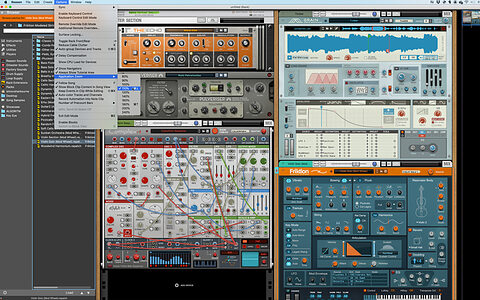
Muramasa Audio Electrum
Available through United Plugins, Muramasa Audio’s Electrum is a guitar‑style amp, speaker and pedalboard modelling plug...
To find the exact phrase, put the words in quotes or join them together with a plus sign e.g. live+recording or "live recording".
To find, say, all live recording articles that mention Avid, enter: live+recording +avid - and use sidebar filters to narrow down searches further.

Available through United Plugins, Muramasa Audio’s Electrum is a guitar‑style amp, speaker and pedalboard modelling plug...

Origin Effects' latest offering is inspired by the work of the backline technicians of the ’70s and ’80s who spent time modifying amps in search of new and exciting sounds.

This Voice Changer plug‑in is probably going to appeal more to those creating podcasts or low‑budget movies than to music producers...
I’m running my whole studio from one 13 amp socket. I should imagine the total load is no more than one kilowatt. Even at twice...

We check out Reason’s high‑res new look.

We show you how to get great results from self‑recording singers.

With RND’s famous Silk circuitry on board, this summing mixer allows you to dial in texture to taste.

Integrated circuits are fundamental to today’s studio hardware. And when the semiconductor industry sneezes, the music business catches a cold...

The Soundbrenner Core is a smartwatch made for musicians.

SPL combine their acclaimed headphone amps with monitor control facilities and USB audio interfacing.

A long way from their rackmounted Minimoogs, Studio Electronics’ SE‑3X is a four‑filtered, paraphonic monster.

Two‑way or three‑way? Ported or sealed? Analogue or DSP‑assisted? We help you navigate the monitor maze and choose the best speakers for your studio.

The music of Priya Ragu is, on the surface, a solo project. However, a closer look at the Sri Lankan Tamil‑Swiss artist’s work reveals a close songwriting and production partnership with her brother, Japhna Gold.

Pop writing and production today is a team game, and the Monsters & Strangerz are one of the hottest teams around.

Warm Audio’s latest mic takes on the venerable Neumann U67. We put it to the test!

In Frequency 2, Cubase 11 Pro has a powerful dynamic EQ.

We guide you through DP’s pitch‑shifting and time‑stretching options.

Go beyond the pan pot with Logic’s Direction Mixer.

The newest version of Pro Tools offers much for both native and HDX users.

Get creative with Studio One’s FX Chains.